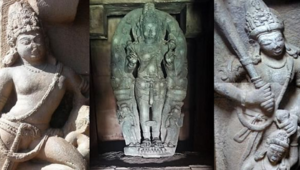
NRC (National Register of Citizens)
India has a large area of land that make border with many countries. Due to uneven landscape it is virtually impossible to fence or seal the border completely.
In past, the porous border causes lots of illegal migration from various countries, especially from Bangladesh and Myanmar to Assam.
The National Register of Citizens (NRC) tries to deal with the major problem of illegal migration from Bangladesh in Assam.
NRC takes into account the exact number of outsiders in the population of the state. The idea of getting rid of “outsiders” has two implications –
1. By adoption of the draft NRC, the illegal migrants would be chucked out.
2. Those in the draft get the stamp of identity from what is considered a due and impartial process.
Outsiders in NRC:
- A section believes that NRC endorses “son of soil” act that would harm not only the legal identity, but also the dignity and sense of autonomy, thereby questioning their place in larger world.
- There is a question of morality and humanity with regards to outsiders in NRC is unresolved. The term other is a problematic word.
What is the Assam National Register of Citizens?
- The NRC is basically a list of Indian citizens of Assam.
- NRC prepared in 1951is being updated to include the names of people or their descendants who appear in the 1951 NRC, in any of the Electoral Rolls, or in any one of the other admissible documents issued up to the midnight of March 24, 1971.
Why is March 24, 1971 the cut-off date?
- There have been several waves of migration to Assam from Bangladesh, but the biggest was in March 1971 when the Pakistan army crackdown forced many to flee to India. The Assam Accord of 1985 that ended the six-year anti-foreigners’ agitation decided upon the midnight of March 24, 1971 as the cut-off date.
Who are outsiders? :
- Citizenship Amendment bill, 2016 lets those from the other side is based on their religion. This bill declares Hindus, Sikhs, Buddhists, Jains, Parsi and Christians fleeing religious persecution from Afghanistan, Pakistan and Bangladesh as not being illegal migrants for the purpose of the Citizenship Act, 1955. It also reduces the time requires for such persons from these countries to obtain citizenship by naturalization from 11 years to 6 years.
- A Large section believe that this bill tries to remake the notion of Indian citizenship from a secular conception to a religious one and goes against Art 14 of Indian constitution. It is argued if the union govt was genuine about sheltering vulnerable minorities, it should include Baha’is, Shias and Ahmadias, among others, who face persecution in Sunni Muslim majority countries for insufficiently or improperly Islamic.
Issue :
A petition has been filed in the Supreme Court alleging that that several categories of persons were deprived of voting rights ahead of the Lok Sabha polls.
- One category included persons whose names figured in the draft NRC but not in the voter list.
- Second category included persons whose names were deleted from the voter list appeared in the draft NRC published on July 30, 2018. The petition claimed these people had voted in the last Lok Sabha election in 2014.
- The third category of people was those declared foreigners by the foreigners’ tribunal as well as by the Guwahati High Court; the court order was stayed by the Supreme Court.
- The fourth category comprised those already declared foreigners by the tribunal; this was set aside by the Supreme Court. However, their names had been deleted from the voters list pursuant to the order of the tribunal.
- In the fifth category were those whose names had not been included in the draft NRC, but their family members were included; these had filed a claim for the inclusion of their names.
For a person’s name to be included in the updated NRC list of 2018, he/ she will have to furnish:
- Existence of name in the legacy data: The legacy data is the collective list of the NRC data of 1951 and the electoral rolls up to midnight of 24 March 1971.
- Proving linkage with the person whose name appears in the legacy data.
Role of Supreme Court:
- Supreme Court has decided that it will judicially oversee the process of updating the NRC which is supposed to help identify Indian citizens residing in Assam in accordance with the Citizenship Act, 1955 and Assam accord.
- The first draft published in 2017 include only 1.9 crore names (less than 60% of state’s population), causing panic among masses but averted on the promise that more names to come.
- A section considers it non-transparent and questioned the neutrality of presiding judge, Justice Ranjan Gogoi , who himself hails from Assam.
- It has led to a court that has discarded procedure, caused grievous injury to vulnerable communities and diminished its own credibility through its overreach on matters.












